Virtual Inheritance
This is pretty cool. Introduced in CS247. I didn’t know this was a thing.
Virtual inheritance is a C++ technique that ensures only one copy of a base class’s member variables are inherited by grandchild derived classes.
Virtual Inheritance helps us fix the Diamond Problem.
Syntax
// struct B: A becomes:
struct B: virtual A {...}
// class C: public A becomes:
class C: virtual public A {...}The keyword virtual indicates that this base class will be shared among all others who inherit from it virtually in the inheritance hierarchy.
Now, dOjb.a unambiguous, a field is now shared between both patterns of the object.
class A {
public:
A(int x) {...}
}
class B: public virtual A {
public:
B(...): A{1} ... {}
};
class C: public virtual A {
public:
C(...): A {2} {...}
};
class D: public B, public C {...}Constructors for virtual bases must run before any other constructors.
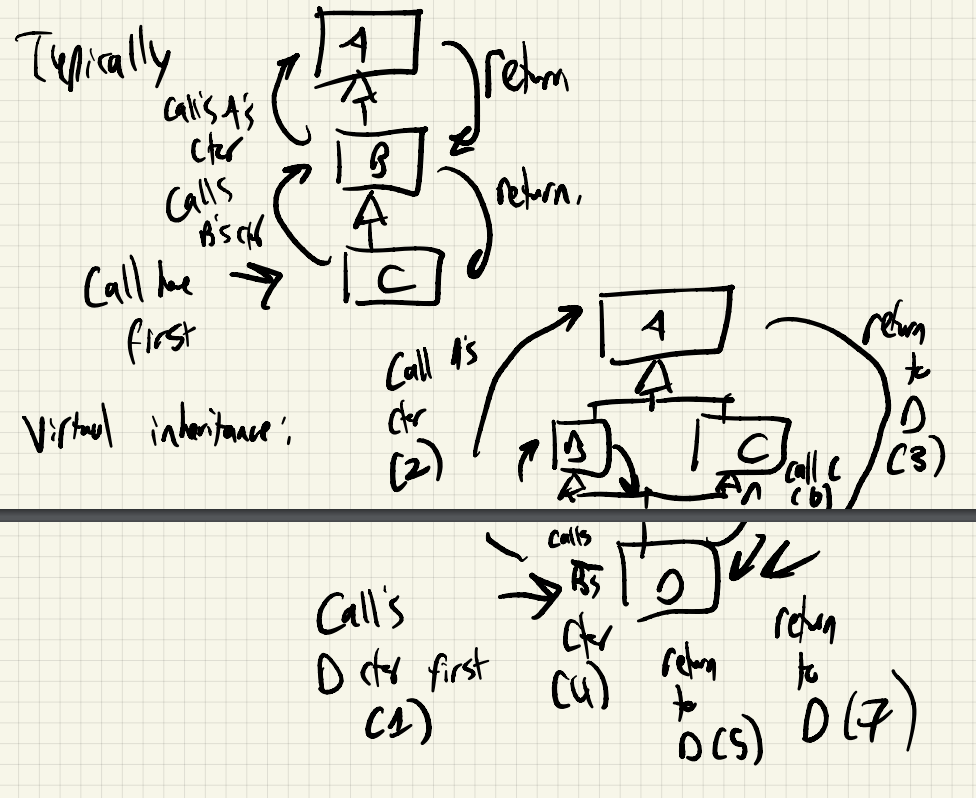
- This shows the order in which the objects is constructed for virtual inheritance:
- Calls
D’s constructor - Calls
A’s constructor - Returns to
D - Calls
B’s constructor - Returns to
D - Calls
C’s constructor - returns to
D
Fixed
class A {
public:
A(int x): ... {...}
};
class B: public virtual A {
public:
B(): ... {...} // Calls A's ctor
};
class C: public virtual A {
public:
C(): ... {...} // Calls A's ctor
};
class D: public B, public C {
public:
D(): A{5}, B{}, C{} ... {...}
};Object Layout with Virtual Inheritance
How does object layout work with multiple virtual inheritance?
class A {...}
class B: public A{...}B object:
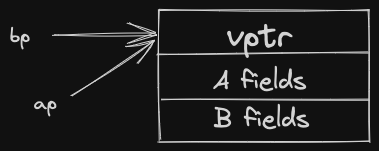
B* bp = new B{...};
A* ap = bp;To treat a B* like an A*, simply create a pointer copy, points at the same location, ignore B fields. Same strategy cannot be used for multiple virtual inheritance.
D* dp = new D{...};
A* ap = dp;
B* bp = dp;
C* cp = dp; // Doesn't look like a Cobject if we point at the same location!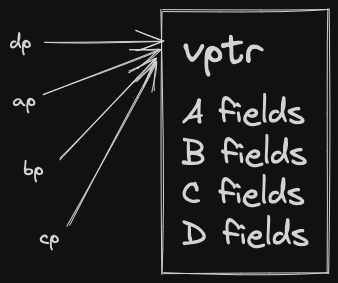
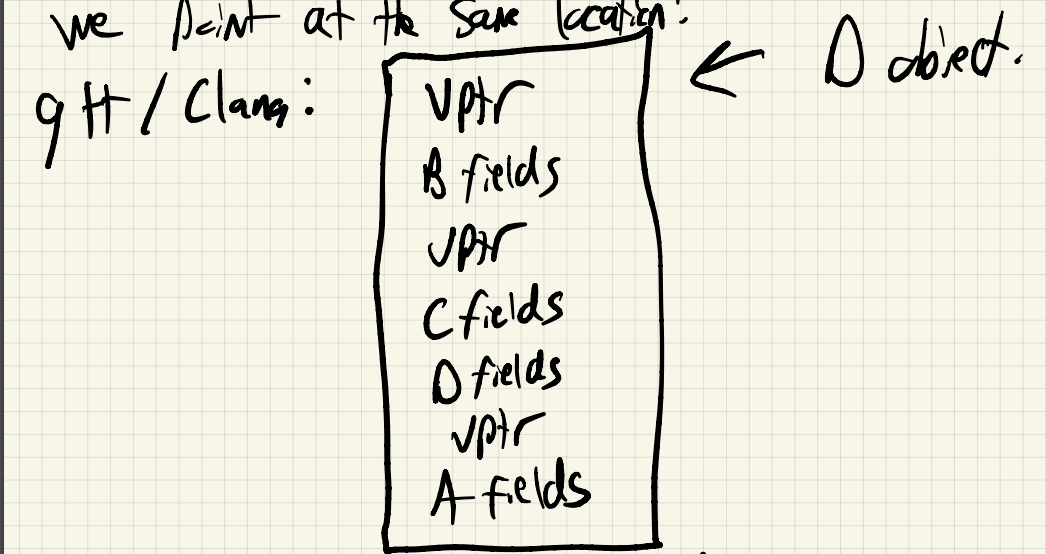
Note
virtual Base(A)is actually stored at the end of the object! Not the beginning.
B* bp = ...;
cout << bp->a << endl;If bp points at a D object, see above memory diagram.
If bp points at a B object,
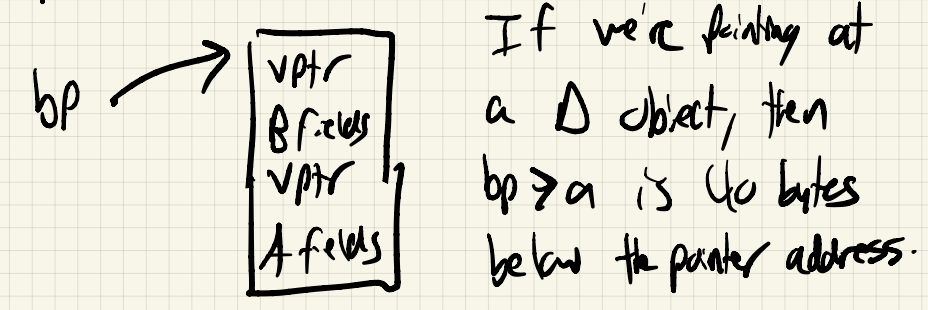
Note
- If we’re pointing at a
Dobject,bp->ais 40 bytes below the pointer address.- If we’re pointing at a
Bobject,bp->ais 24 bytes below the pointer address.
Note: Now, finding superclass fields depends on the dynamic type.
Solution: Store the offset to the superclass fields inside of the vtable.
This is where the new “virtual” inheritance comes from.
Note: The D object does not look like an A object, a C object, or a D object simultaneously, but portions of it do.
Doing pointer assignment can change where the pointer is pointing to.
- This is really IMPORTANT, be careful
D* dp = new D{...};
A* ap = dp; // dp points at the top of the D object
// ap points just at the t positionstatic_cast/dynamic_castwill also adjust pointer locations for you as necessary.reinterpret_castwon’t - underscores danger associated with the cast.
Finally, both Google C++ Style guide, and ISOCpp both recommend when using multiple inheritance, Interface Classes are best.
Exercise
#include <iostream>
using namespace std;
struct A {
int a;
A(int a): a{a} { cout << "A ctor called" << endl;}
};
struct B: virtual A {
int b;
B(int b): A{200}, b{b} {cout << "B ctor called" << endl;}
};
struct C: virtual A {
int c;
C(int c): A{300}, c{c} {cout << "C ctor called" << endl;}
};
struct D: B, C {
int d;
D(int d): A{400}, B{500}, C{600}, d{d} { cout << "D ctor called" << endl;}
};
int main() {
D d{247};
cout << d.a << " " << d.b << " " << d.c << " " << d.d << endl;
B b{247};
cout << b.a << " " << b.b << endl;
}
/* OUTPUTo
A ctor called
B ctor called
C ctor called
D ctor called
400 500 600 247
A ctor called
B ctor called
200 247
*/